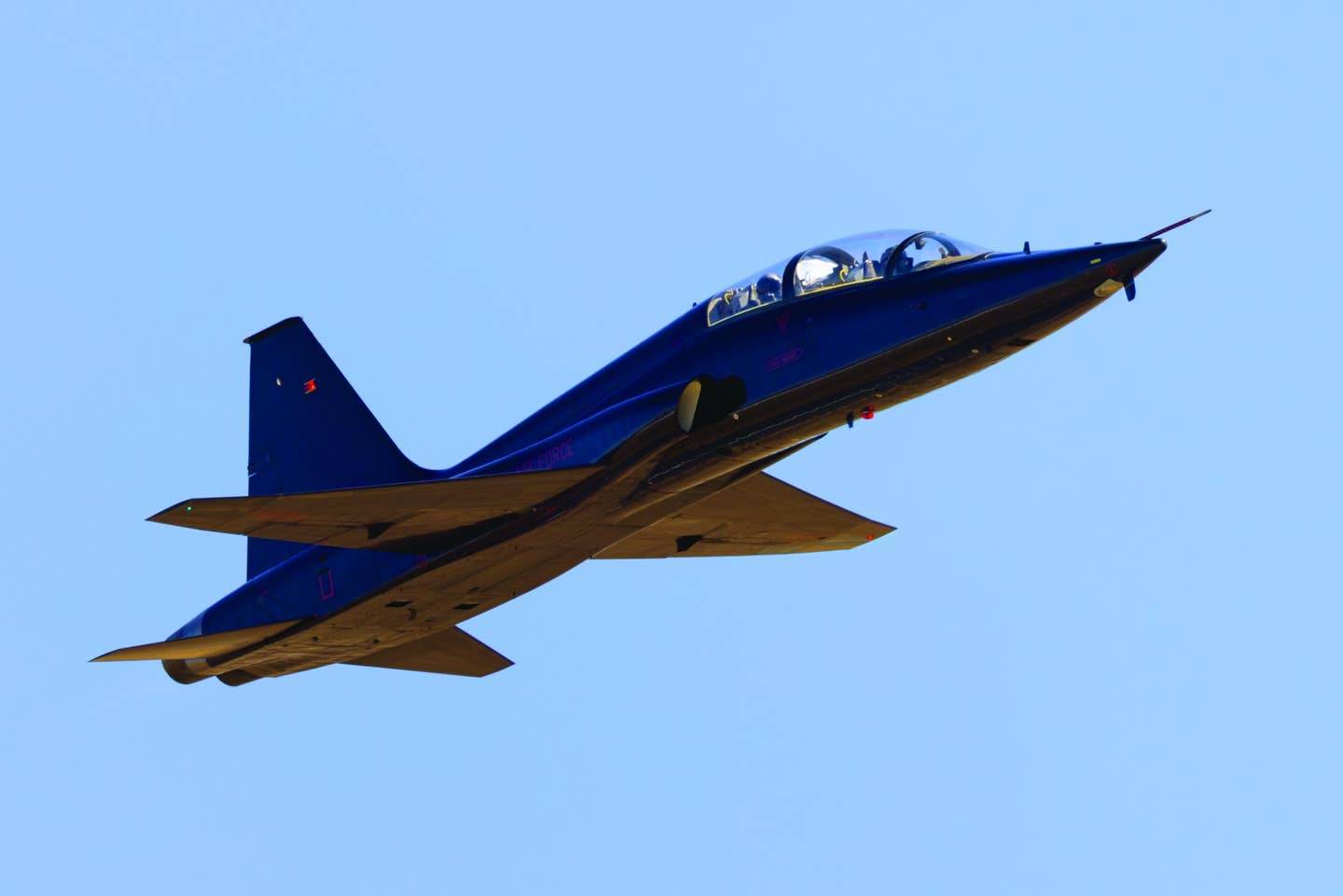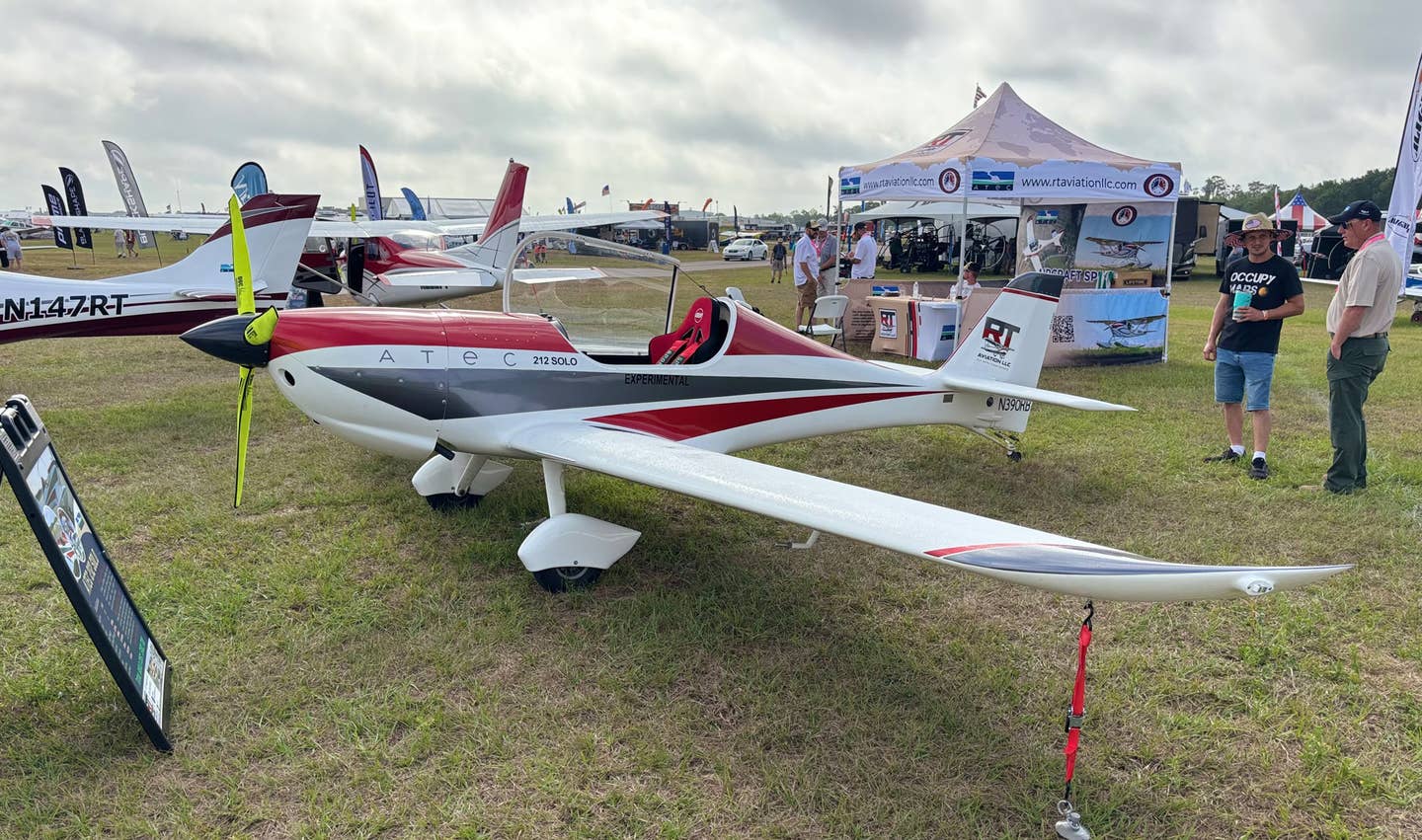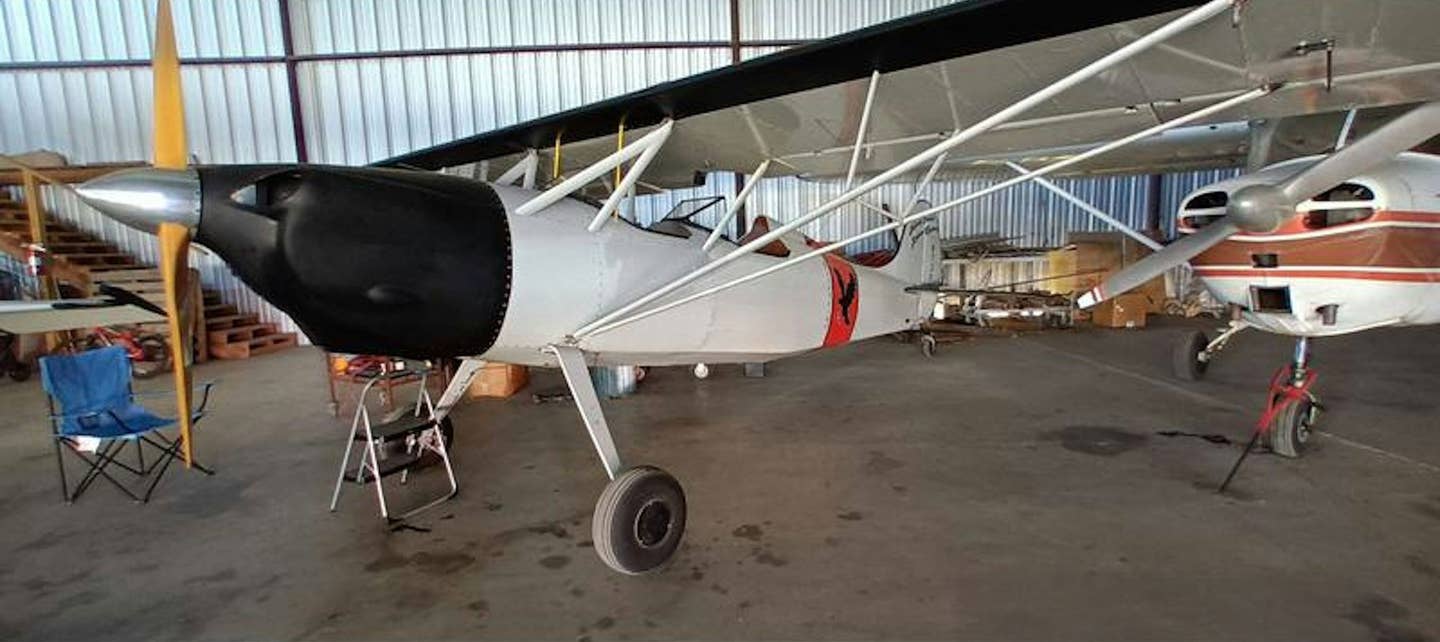This Incredible Plane: T-38 Talon
The supersonic jet trainer is blessed with movie star looks.

A T-38 Talon approaching for a low pass. [Adobe Stock]
Name a 60-year-old airplane that has trained more than 50,000 pilots, is the ride of choice for NASA astronauts, and looks just as elegant as any of the latest supersonic jets on the ramp today. That describes the Northrop T-38 Talon.
Slender, graceful, supersonic, and highly maneuverable all apply here. Yet, the T-38 has managed to be forgiving enough to allow aspiring young U.S. Air Force pilots, with a little more than 100 hours flight time in their logbooks, to solo in it in just 10 to 12 hours. All of this may explain its more than 60 years of service training pilots in a wide variety of additional roles. So where did this story begin?
The year is 1953. The Air Force is in the middle of developing the Century Series of jet fighters, beginning with the F-100 Super Sabre and progressing through a line of ever larger, more powerful, and faster aircraft, the lone exception being the lightweight and very powerful F-104 Starfighter. Northrop Aviation, having become aware of the small-but-powerful General Electric J-85 jet engine, decided a true lightweight fighter propelled by two of these 3,000-pound thrust (with afterburner) engines was in order. The company felt its low- cost “hot rod” might outperform the Century Series fighters and not break the U.S. Treasury while doing it.
The airplane that emerged, designated the N-156, set the design for the more than 2,500 F-5 “Freedom Fighters” that would serve for nearly six decades with air forces around the world. The design featured two J-85 engines (with afterburner) mounted in tandem within a removable tail cone. The aircraft featured modest low-aspect-ratio wings, large all-moving stabilators, and an elegant single vertical tail. The cockpit section, mounted forward of the split inlets, was relatively roomy, well laid out, and featured outstanding visibility around the slender nose section. Despite its success as an export fighter, the F-5 didn’t match it at home, serving primarily in the aggressor role. However, the design became an immediate contender to replace the aging T-33 Shooting Star (itself a derivative of the original single-seat Lockheed P-80) in the 1958 U.S. Air Force Undergraduate Pilot Training (UPT) advanced trainer competition.
The subsequent airplane, the T-38A Talon—bereft of the F-5’s armaments, hardpoints, and war paint—featured a slightly lengthened nose section, gleaming white paint, and a tandem canopy. These modifications turned the relatively stubby F-5 into a graceful beauty, often dubbed the “White Rocket.” These good looks were matched by the Talon’s stunning performance. In 1962, a T-38A wrested the 3,000-, 6,000-, 9,000-, and 12,000-meter records for absolute time to climb from the significantly more powerful F-104 Starfighter. To be fair, an F-4 Phantom reclaimed these records a month later, but it took the combined thrust of the two 18,000- pound J-79 engines to beat the little Mach 1.3 T-38.
The T-38 entered service as the Air Force advanced trainer in 1961 and continues in that role today, even as it is being replaced by the Boeing-Saab T-7 Red Hawk. More than 1,000 examples were constructed between 1961 and 1972. During those 60 years, the Air Force has been one of the few armed services in the world to turn loose its senior flight students in a supersonic jet.
Over its lifetime, there have been many variants of the T-38, but the Air Force has primarily relied on three. In addition to the basic T-38A, an AT-38B variant was developed for “fighter lead in training” at Holloman Air Force Base in New Mexico. The B variant adds a basic gunsight and weapons pods to the airframe to help pilots make the transition from UPT to advanced fighter maneuvers. More recently, nearly 500 T-38A models were modified by the Boeing Co. to the T-38C configuration. These modifications increased the power and reliability of the original J-85 engines, enlarged the engine inlets to help the engines breathe better, strengthened the wings and tail feathers, and modernized the cockpit with digital/head-up display (HUD) technology.
For most people, the most iconic representation of the T-38 is the livery of the Air Force Thunderbirds. During the early 1970s gas shortages, the T-38 fit the bill as an economical yet high-performance demonstration aircraft. From 1974 until a tragic accident in 1982 during practice that claimed the lives of the four diamond pilots, the Air Force Thunderbirds flew the T-38 in flight demonstrations around the country. Additionally, SR-71, U2, B1, B2, and B-52 pilots, among others, flew the T-38 as a low-cost way to keep their edge.

Subscribe to Our Newsletter
Get the latest Plane & Pilot Magazine stories delivered directly to your inbox






